Clean Beauty Trends to Watch in 2025
flareAI
Quick Listen:
No parabens, no synthetic fragrances just pure, potent ingredients harvested sustainably and packaged in something that will biodegrade without a trace. This isn't a luxury reserved for the elite; it's the new normal in beauty. The clean beauty sector has exploded from a whisper in wellness circles to a roar across global markets, demanding accountability from every tube and tincture. As consumers wield their wallets like votes for a healthier planet and healthier skin, brands are racing to adapt. For pioneers like Liht Organics, which has long championed organic formulations free from toxins, these shifts represent not just opportunity, but a mandate to evolve. In this deep dive into the trends defining 2025, we'll unpack how inclusivity, innovation, and ethics are redrawing the lines of the organic cosmetics landscape.
Many women feel trapped by makeup that hides flaws but risks irritation and hidden toxins. This daily choice weighs heavily, dimming confidence over time. Liht Organics invites you to embrace beauty differently. With up to 90% USDA-certified organic ingredients, our vegan, cruelty-free products deliver vibrant color and gentle care, letting you glow with confidence, knowing your skin is nurtured, not compromised. Shop Now!
Clean Beauty's Unstoppable Momentum
The data underscores the urgency: Clean beauty isn't a fad it's a force reshaping economies. Recent projections from Mordor Intelligence's latest analysis estimate the global market at USD 163.35 billion this year, hurtling toward USD 264.55 billion by 2030 with a robust 10.12% compound annual growth rate. Asia-Pacific dominates as both the largest hub with a commanding 30.62% share last year and the fastest expander at 12.52% CAGR, fueled by booming demand in India and premium preferences in China, Japan, and South Korea. This surge stems from a collective awakening: Shoppers aren't just buying products; they're investing in transparency, ingredient safety, and unyielding sustainability.
Zoom in on North America, where regulatory ripples like the FDA's Modernization of Cosmetics Regulation Act are tilting the scales toward compliant clean brands. Meanwhile, Grand View Research paints an equally bullish picture, valuing the market at USD 8.25 billion in 2023 and forecasting USD 21.29 billion by 2030, propelled by a 14.8% CAGR from 2024 onward. Here, skincare commands a lion's share of 41.70%, underscoring a pivot toward preventive, gentle care amid rising alarms over harmful additives. Women drive 83.63% of demand, but cracks are forming men and non-binary consumers are entering the fray, drawn by versatile, no-fuss options. Specialty stores, capturing 35.67% of sales, serve as proving grounds for these ethos-aligned wares, while online channels explode at 15.7% CAGR, thanks to accessible hubs like Walmart's clean beauty shop, where nearly 80% of over 900 products dip below USD 10.
What ignites this fire? It's a potent brew of environmental angst and personal empowerment. Consumers pore over lists, shunning endocrine disruptors and forever chemicals, while social media amplifies the call think 1.9 billion TikTok views and 6.1 billion Instagram tags on clean beauty, per recent surveys. Yet, "clean" defies a single script. As Mintel illuminates, Western Europeans tether it to green credentials and ethical sourcing, APAC folks prioritize "free-from" safety nets, and Americans, unbound by stringent rules, let brands craft their own narratives often centered on natural, non-toxic purity. This patchwork demands savvy navigation, but it also sparks creativity. Enter The Business Research Company's 2025 report, which charts this "strong growth" across 15 geographies from bustling Brazil to tech-savvy South Korea while dissecting macro headwinds like tariffs, inflation, and supply snarls. It spotlights segments ripe for investment: natural and vegan ingredients, liquid and gel forms, and offline-online hybrids serving men, women, and kids alike. In a fragmented field of moderate concentration, white-space abounds for agile players like Liht Organics to carve niches with biotech-infused, globally attuned lines.
Inclusivity Redefines the Mirror
Beauty has long been a battlefield of binaries, but heralds a truce. Gender-neutral products aren't just polite nods they're market multipliers, appealing to a generation ditching labels for liberation. Younger cohorts, from Gen Z to elder millennials, crave universality: a balm that soothes chapped lips or highlights cheekbones, regardless of who's wielding it. Liht Organics exemplifies this ethos, blending organic botanicals into minimalist vessels that transcend demographics. Their hydrating elixirs and multi-tasking tints embody a philosophy where efficacy trumps expectation, fostering a sector where individuality reigns.
Sustainability seals the deal on packaging fronts. Single-use plastics? Relics of a reckless era. Now, refill stations, post-consumer recycled glass, and mycelium-based wrappers proliferate, slashing waste while signaling virtue. Liht Organic's compostable jars, derived from plant starches, exemplify how small pivots yield seismic shifts diverting landfill fodder and wooing eco-warriors. This isn't greenwashing; it's groundwork. With Asia-Pacific's 15.9% CAGR, brands tailoring to regional rituals like monsoon-proof, humidity-happy formulas stand to thrive. The payoff? Loyalty forged in shared stewardship, as consumers reward those who recycle rhetoric into reality.
Where Science and Soil Converge
Clean beauty's alchemy peaks in the lab-to-land transition. Microbiome-friendly formulations lead the charge, honoring the skin's bacterial ballet rather than bulldozing it. These gentle guardians prebiotic-infused creams and pH-balanced washes nurture equilibrium, warding off irritation and amplifying resilience. Liht Organics weaves this wisdom into their core, deploying fermented ferments and probiotic peers to bolster the barrier, all substantiated by mounting studies linking microbial harmony to luminous longevity.
Biotech vaults the vault: Lab-cultured collagen from yeast, spider-silk proteins sans arachnids, and upcycled algal oils redefine "natural" without ravaging rainforests. Mordor's lens reveals makeup's 12.37% sprint and premium tier's 12.01% stride, as these feats deliver dermatologist-grade punch with featherlight footprints. Envision a serum synthesizing hyaluronic acid from engineered microbes plump, potent, planet-sparing. It's 2025's manifesto: Innovation as ally, not adversary, to authenticity.
Personalization propels the personal touch. AI algorithms dissect dermal data genetics, environs, even diet to prescribe bespoke blends. Liht Organics experiments with app-linked quizzes yielding custom kits, adapting to urban smog or alpine chill. This intimacy isn't gimmickry; it's genomics meeting glamour, with online retail's 12.43% CAGR underscoring digital's dominion. Kid's clean care, galloping at 13.81%, extends the promise: Parental paranoia over phthalates births a boom in safe, playful potions.
Navigating the Thorny Thicket
Glory has grit. Sourcing pristine organics strains supply veins, with climate caprice and certification chaos breeding bottlenecks. As APAC surges, ethical audits multiply, yet lapses like inconsistent vegan verifies invite skepticism. Liht Organics counters with blockchain-traced trails, but scaling sustainably tests even titans.
Regimes vary wildly: Europe's Green Claims Directive mandates proof, America's laissez-faire invites imposters, and APAC's safety-first stance spotlights "free-from" fidelity. Greenwashing lurks bold boasts sans backing erode empires. Mintel's pulse: Nearly half of U.S. clean users ditched a darling over ingredient qualms, prizing proof over promises. For Liht, transparency is armor: Full disclosures disarm doubt.
Affordability bites hardest. Ethical extras inflate tags, sidelining emerging economies where clean curiosity clashes with coin. Southeast Asia and Latin America's ascent demands democratizing affordable avatars without compromising creed. Balancing books and beliefs? The ultimate boardroom ballet.
Horizons of Harvest
Shadows yield to sunrises. Untapped realms Middle East's modesty-minded mains, Africa's ancestral herbals, South America's biodiversity bounty beckon with bespoke bids. The Business Research maps 15 terrains, urging localized lore: Spice-infused salves for spice routes, or arid-adapted actives for desert dwellers. Liht Organics could conquer via cultural cartography, blending global goods with grassroots grit.
Sustainability seeds stickiness. Gen Z's gaze favors fidelity brands broadcasting bold ethics reap rabid retainers. Loyalty loops, from refill rewards to co-op crafts, cement circles. Tech turbocharges: Machine learning mines molecular matches, slashing scraps and sparking sustainable synergies. Algorithms alchemize waste into wonders, as Russia's ripples and tariff tempests test tenacity, per macro missives.
Vision of Verdant Vitality
By 2030's dawn, clean beauty will be bedrock, not boutique transparency the touchstone, innovation the engine. Experts envision a vista where regulations harmonize, consumers command, and cosmetics cure as they cosset. For Liht Organics, the blueprint gleams: Anchor in organic orthodoxy, amplify with avant-garde arcs. From fluid frontiers to fertile labs, 2025 whispers a truth: Beauty's bloom demands roots in responsibility. Scan those labels, brands the revolution rewards the resolute.
Frequently Asked Questions
What is driving the growth of the clean beauty market in 2025?
The clean beauty market is experiencing explosive growth, projected to reach $264.55 billion by 2030 with a 10.12% compound annual growth rate. This surge is driven by consumer demand for transparency, ingredient safety, and sustainability, particularly in the Asia-Pacific region which commands a 30.62% market share. Social media amplification, with 1.9 billion TikTok views on clean beauty content, and regulatory changes like the FDA's Modernization of Cosmetics Regulation Act are also accelerating adoption.
How are clean beauty brands incorporating sustainability and inclusivity in 2025?
Clean beauty brands in 2025 are embracing gender-neutral products that appeal to all demographics, moving beyond traditional beauty binaries to serve Gen Z and millennials seeking universal solutions. Sustainability efforts include refill stations, post-consumer recycled glass packaging, and innovative materials like mycelium-based wrappers and compostable jars made from plant starches. This approach not only reduces environmental impact but also builds consumer loyalty among eco-conscious shoppers who prioritize brands with authentic sustainability practices.
What innovative ingredients and technologies are shaping clean beauty products in 2025?
The clean beauty industry in 2025 is revolutionizing with microbiome-friendly formulations that include prebiotic-infused creams and pH-balanced products to support skin's natural bacterial balance. Biotech innovations are introducing lab-cultured collagen from yeast, spider-silk proteins, and upcycled algal oils that deliver premium results without environmental harm. Personalization through AI algorithms is also trending, with brands using genetic and environmental data to create custom formulations, while blockchain technology ensures ingredient traceability and transparency.
Disclaimer: The above helpful resources content contains personal opinions and experiences. The information provided is for general knowledge and does not constitute professional advice.
You may also be interested in: Organic Makeup That Heals As It Conceals – Liht Organics
Many women feel trapped by makeup that hides flaws but risks irritation and hidden toxins. This daily choice weighs heavily, dimming confidence over time. Liht Organics invites you to embrace beauty differently. With up to 90% USDA-certified organic ingredients, our vegan, cruelty-free products deliver vibrant color and gentle care, letting you glow with confidence, knowing your skin is nurtured, not compromised. Shop Now!
Powered by flareAI.co
شاركي
You May Also Like
-

Discovering Self-Love Through Clean Beauty: A Guide to Nurturing Your Inner and Outer Self
In the journey of self-love, every action, thought, and choice we make towards ourselves can be a powerful affirmatio...
-

The Science Behind Organic Makeup and Pregnancy: A Gentle Choice for Moms-to-Be
wp:paragraph Pregnancy is a wonderful and exciting journey that comes with added responsibilities of ensuring the ...
-
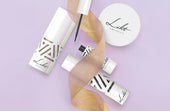
Liht Organics Black Friday: Enhance Your Beauty Routine with Vegan, Organic, and Natural Essentials!
As the holiday season approaches, there’s a sparkle in the air, and we at Liht Organics are thrilled to add a touch o...
-

Organic Makeup That Heals As It Conceals
Liht Organics Empowers Women With Only The Best For Their Beauty NeedsLiht Organics combines the best of both worlds:...
-
![[FEATURE] Liht Organics to debut at TFWA Asia Pacific show](//lihtorganics.com/cdn/shop/articles/1_1.png?v=1759328400&width=170)
[FEATURE] Liht Organics to debut at TFWA Asia Pacific show
‘Organic makeup that’s safe enough to eat’ — Liht Organics to debut at TFWA Asia Pacific show by Hannah Tan | 24 Apri...
-
![[FEATURE] The Singapore-based organic makeup brand is a first-time exhibitor at this year’s TFWA Asia Pacific Exhibition in Singapore in May 2025](//lihtorganics.com/cdn/shop/articles/2_1.png?v=1759328386&width=170)
[FEATURE] The Singapore-based organic makeup brand is a first-time exhibitor at this year’s TFWA Asia Pacific Exhibition in Singapore in May 2025
TFWA Asia Pacific preview: Liht Organics targets expansion in travel retail By DFNI Staff Writer The Singapore-bas...
-
![[FEATURE] Travel Retail Awards 2025 finalists - Best Make-up Product Color-Intense Liquid Lipstick – Liht Organics](//lihtorganics.com/cdn/shop/articles/4_e2f54f0f-fcd1-46e7-9990-fc9d29e35131.png?v=1759328382&width=170)
[FEATURE] Travel Retail Awards 2025 finalists - Best Make-up Product Color-Intense Liquid Lipstick – Liht Organics
Revealed: Travel Retail Awards 2025 finalists By Trbusiness Editor | Wednesday, 23 July 2025 15:21 TRBusiness is th...
-
![[FEATURE] Liht Organics targets expansion in travel retail](//lihtorganics.com/cdn/shop/articles/3_1.png?v=1759328346&width=170)
[FEATURE] Liht Organics targets expansion in travel retail
Organic makeup that’s safe enough to eat: Liht Organics targets expansion in travel retail By Laura Shirk Liht Organ...
-

[FEATURE] Gulf News: TikTok’s strawberry girl makeup trend: How to achieve that rosy glow inspired by Hailey Bieber
Berry, berry, strawberry, love strawberry, like BTS’s J-Hope, the band’s strawberry enthusiast once said. If only we ...
-

[FEATURE] Gulf Business Magazine : Liht-ing it up
Our founder, Nerissa Low was interviewed by Gulf Business, where she discussed her experience launching Liht, an orga...
-

[FEATURE] Daily Vanity: 11 local beauty brands owned by women – you’d be surprised how many of them started in their kitchens!
When we give a shout-out to homegrown beauty businesses, we aren’t just doing it for the sake of supporting local. Th...
-

[FEATURE] Entrepreneur ME : UAE-Based Liht Organics' Nerissa Low On Crafting An Organic Makeup Brand For The Skin-Conscious Consumer
As is the case with the origin stories of so many startups out there, Liht Organics came into being after its founder...
-
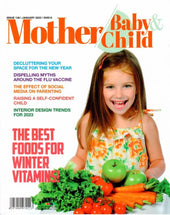
Mother, Baby & Child Editor’s Pick: Liht Organics Lights the Way
Excited to be the Mother, Baby & Child’s ‘Editors pick’ for their choice of Beauty brand.The article outlined the...
-
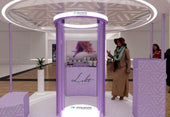
[FEATURE] EmiratesWoman - 8 Fabulous things to do in Dubai this weekend
by SARAH JOSEPHJANUARY 20, 2023Try the UAE’s first virtual reality makeup podium The popular VR-backed makeup exper...
-

Nerissa Low of Liht Organics On The Self-Care Routines & Practices Of Busy Entrepreneurs and Business Leaders
By Maria Angelova, CEO of Rebellious Intl.Date: 4 January, 2023Nerissa Low of Liht Organics On The Self-Care Routines...
-

Liht Organics: Meet the beauty brand that has caught the eye of the Royal Family of Bahrain
By Crystal Lee Digital Editor28 May 2021The world of clean beauty is, ironically, rather murky.That’s because the ter...
-

The latest luxury makeup and skincare drops, including serums, concealers, moisturisers and more
Allisa Noraini21 May, 2021It’s fine to splurge in the name of beauty. This new range of makeup and skincare drops are...
-

These SG Beauty Bosses Are Conquering The World Despite The Pandemic
First Singapore, then the US, China, Germany, Dubai, UK, South Korea, Malaysia, Hong Kong, Thailand, Australia… By...
-

Nerissa Low, Founder at Liht Organics
Written by Callum LaingPosted on December 26, 2020 10 min readNerissa Created Organic Makeup That Actually Improve...
-

Liht Organics – Makeup That Makes You
At Liht Organics, our mission is simple – to provide women (and men) with a safe experience when it comes to beauty s...
-

Why Should We Use Organic Makeup?
We cannot deny that cosmetics is one of our beauty essential item – it enhances our looks and conceals our flaws. Man...
-

Organic makeup and why your skin will love it: Liht Organics founder
By Jolene,July 27, 2020 |7 mins readOrganic make up in Singapore is a trend that is fast-catching on here as we becom...
-

[FEATURE] DC EDIT – Makeup & Confidence: Talking Self-love With Liht Organics’ Founder Nerissa Low
Makeup and confidence — the long, drawn-out fight that many of us have grappled with personally. I’m sure I’m not the...
-

[FEATURE] THE FEMALE CULTURE – I TRIED LIHT ORGANICS AND THIS IS HOW IT WENT
I’m a huge fan of makeup and I love testing out new products so I was pretty excited to get my hands on Liht Organics...
-

[FEATURE] SINGAPORE MOTHERHOOD – The Best Organic and Natural Skincare and Makeup for Pregnant and Breastfeeding Mums in Singapore
Pregnancy is a hormone-volatile period for women. One place where this makes itself seen and felt is on the skin. Som...
-

[FEATURE] AFTER CLINIC HOURS – 21 Back to Beauty Deals in Singapore (2020)
With spas and salons shuttered island wide for two months, I never thought I’d be this desperate for a good old’ Swed...
-

[FEATURE] KUL AL USRA MAGAZINE JUNE 2020
Choosing Pinks & Oranges this summer!Featured: Moisture Burst Lip Glaze in Pink Cupcake.
-
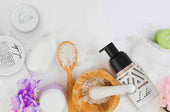
[FEATURE] Award-winning Organic Makeup Brand Liht Organics Gives Back to the Community & Environment During COVID-19
Singapore’s First Organic Makeup Brand with 100% Natural Makeup That Is Safe Enough to Eat Liht Organics promises org...
-

[FEATURE] COSMETICS DESIGN ASIA – COVID-19 ‘WAKE-UP CALL’: SINGAPORE’S LIHT ORGANICS SEES GLOBAL POTENTIAL AMID CLEAN BEAUTY CLAMOUR
Original article at: https://www.cosmeticsdesign-asia.com/Article/2020/06/26/Singapore-s-Liht-Organics-sees-globa...
-

[FEATURE] THE LIFESTYLE COLLECTIVE – BEAUTY SHOULD NEVER BE CRUEL
Date: June 24, 2020Author: Kristen Chen Liht (pronounced as light) Organics is a Singaporean organic makeup brand t...
-

[FEATURE] NÜYOU – 7 ONLINE PLATFORMS TO SHOP FOR CLEAN BEAUTY PRODUCTS
纯净美容(Clean Beauty)的美肤概念,再近几年来越来越受欢迎。随着消费者“爱自己”的美容意识逐步提升,对于用在脸上的所有物品、成分更为关注和讲究。以广义来讲,纯净美容主张使用“干净”成分和无毒配方,让肌肤的可能性损伤减到最小...
-

[FEATURE] COSMOPOLITAN MIDDLE EAST – 3 BENEFITS OF SWITCHING TO ORGANIC BEAUTY PRODUCTS THIS RAMADAN
By Cosmo – May 08, 2020Nerissa Low, founder of Liht Organics, shares the ultimate benefits of going organic this mont...
-

Nerissa Low of Liht Organics: “Seeing Light at the End of the Tunnel; 5 Reasons To Be Hopeful During this Corona Crisis”
Ely Weinschneider, Psy.D.May 8 · 9 min read …It shows us that everyone- whether we are rich or poor, regardless...
-

[FEATURE] AL MARA MAGAZINE APRIL 2020
-

[FEATURE] RetailME April 2020 – Liht Organics Stays Firm On Strengthening GCC Presence
-

[FEATURE] EMARAT AL YOUM NEWSPAPER – 27 MARCH 2020
English Translation:In spring and summer days, women love to have very light makeup in terms of color and texture, ...
-

[ARTICLE] WKND Magazine March 2020 – Know Your Organic Makeup
-

[FEATURE] AVIAMOST DUBAI – March/April 2020
English Translation:Lipstick with organic flowers. Thanks to the rich complex of natural ingredients, the lipstick...
-

[FEATURE] RUSSIAN EMIRATES (MAR/APR ISSUE)
Russian Emirates is a luxury lifestyle and fashion magazine covering information about the UAE, fashion, beauty, j...
-

[FEATURE] – KUL AL USRA MAGAZINE MARCH 2020
GET THE LOOK!
-

[FEATURE] IMAGES Retail ME – Liht Organics Announces GCC-Wide Expansion
Rupkatha Bhowmick Mar 10, 2020 The plan is to reach 75 Liht Organics retail touchpoints by June-July 2020 and touch...
-

[FEATURE] BABY & CHILD SPRING 2020 – NATURAL BEAUTIES
-

[FEATURE] AWQAT DUBAI – Liht Organics: The First Premium Organic Makeup Brand
ENGLISH TRANSLATION:Liht Organics – The First Premium Organic Makeup Brand Liht Organics, a premium organic beauty ...
-

[FEATURE] FRIDAY MAGAZINE – THE RETRO EYELINER LOOK
-

[FEATURE] MOTHER BABY & CHILD – VANITY ESSENTIALS – THE BEAUTY EDIT
-

[FEATURE] Masala! Magazine February/March 2020 Issue – Beauty Debut: Liht Organics
-

[Feature] – TimeOut Singapore – The Best Local Beauty and Skincare Brands In Singapore
For full article, click here.
-

[FEATURE] KUL AL USRA MAGAZINE – LIHT UP YOUR WORLD WITH LIHT ORGANICS
[ENGLISH TRANSLATION]Liht Up Your World With Liht OrganicsThe First Premium Organic Makeup Brand To Debut In The Mi...
-

[FEATURE] SINGAPORE TATLER – 9 Local Beauty Brands You Should Know Of
-

[FEATURE] nüyou August 2019 Issue – 15 Faces To Watch
-

[FEATURE] HONEYCOMBERS – Local Beauty Gurus: Singapore Beauty Brands You Need To Know About
-

[FEATURE] The Wellness Insider – Seeing The Liht With Founder Nerissa Low
-

[FEATURE] 联合早报 (LianHeZaoBao) – Women Entrepreneur Awards 2019 Coverage
-

[FEATURE] THE STRAITS TIMES Life – Clean beauty with a Singapore heart
-

Romantic Organic Makeup Looks for Valentine's Day: Tips, Tricks, and Product Picks
Valentine's Day is the perfect occasion to embrace the beauty of organic makeup. At Liht Organics, we believe in the ...
-
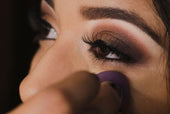
Enhance Your Eyes: A Guide to Eyeliner for Every Eye Shape with Liht Organics
Welcome to the Liht Organics blog, where we believe in celebrating the natural beauty of every eye shape. Today, we'r...
-
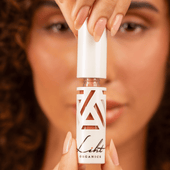
How to do makeup with only lipstick?
At Liht Organics, we believe in the power of clean beauty and the artistry of makeup. Makeup is more than just enhanc...
-

How to Clean Your Makeup Brushes in 6 Simple Steps
Cleaning your makeup brushes may seem like a tedious task, but it's an essential part of your beauty routine. Not onl...
-

Makeup Tips to Help You Look Your Most Flattering on Virtual Meetings!
After more than 2 years of work-from-home arrangement, and possibly hundreds of zoom calls and Google meet virtual me...
-
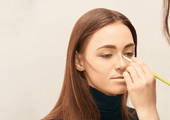
Learn How to Contour with This Simple Guide for Beginners
Want to take your makeup to the next level? Try contouring to achieve a more defined or sculpted look à la the Kardas...
-
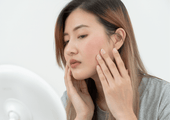
Essential and Easy Makeup Tips for Sensitive Skin
Living with sensitive skin conditions like eczema, psoriasis, and more is already not an easy feat. Throw in makeup t...
-
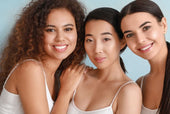
Raising Your Vibration: A Liht Organics Guide for Empowerment This International Women's Day
wp:paragraph As International Women's Day (IWD) approaches, it serves as a powerful reminder of the journey towards s...
-

The Beauty of Going Bare: Why Sleeping with Makeup is a No-No
Have you ever had one of those nights where you're too tired to clean off your makeup? You might believe, "Skipping...
-

Breast Cancer Awareness: Empower Your Beauty with Liht Organics Makeup
During October, we observe Breast Cancer Awareness Month as a way to unite and bring attention to breast cancer whil...
-

The Hidden Dangers of Carmine in Makeup Colorants: Embracing Healthier and Vegan Options
Makeup has become an integral part of our daily routines, allowing us to express our unique beauty. However, as we pr...
-

How can I ensure that my makeup products are organic and won't harm my skin?
When it comes to makeup, it’s important to be mindful of what you’re putting on your skin. With so many products on t...
-
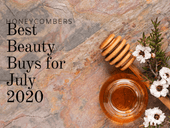
[FEATURE] HONEYCOMBERS – BEST BEAUTY BUYS IN JULY
by Nicole NithiyahWhat’s hot in our beauty hit list: Honest thoughts and top beauty stories we’re swooning over. As w...
-

Liht Organics Introduces Exclusive Gift Sets: Enhance Your Beauty This Festive Season!
As the holiday season approaches and the year draws to a close, Liht Organics is thrilled to present two enchanting g...
-

Get Spooktacular with the Best Halloween Makeup Ideas using Liht Organics' All-Natural, Vegan, and Cruelty-Free Cosmetics!
With Halloween just around the corner, it’s time to let your creativity shine and transform yourself into a spooky,...
-

Celebrating World Animal Day with Liht Organics: Embracing Natural Cruelty-Free Makeup
wp:paragraph As we observe World Animal Day, the team at Liht Organics takes great pride in honoring our pledge to...
-
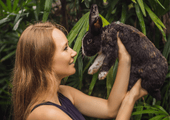
Reasons Why You Should Choose Cruelty-Free Cosmetics Instead!
With increasing exposés unveiling the ugly truth behind animal testing that goes on in the beauty industry, it is lit...
-

Celebrate Singles Day with Makeup That Empowers – 22% Off at LIHT Organics!
This Singles Day, treat yourself to beauty that goes beyond skin-deep. At LIHT Organics, we believe makeup is about s...
-

Preparing for the Cozy Beauty of Autumn: A Preview of Your Fall Look
As we bid farewell to the warm, sun-kissed days of summer, it’s never too early to start dreaming about the enchantin...
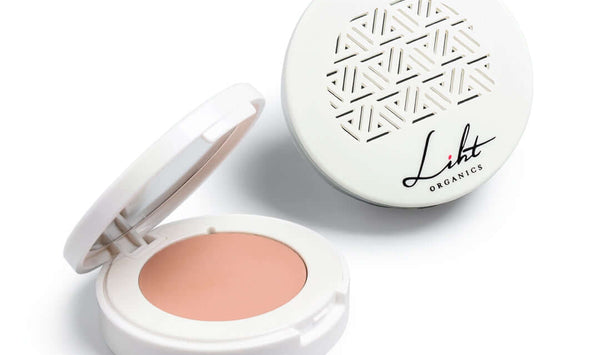
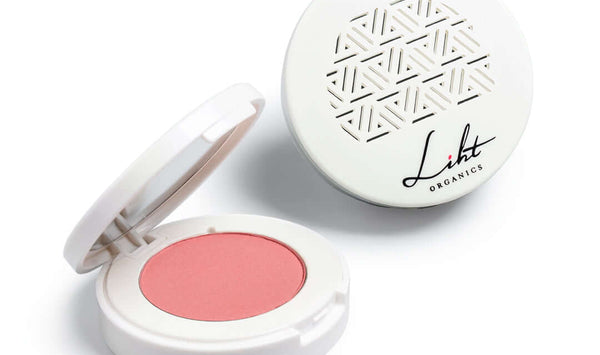
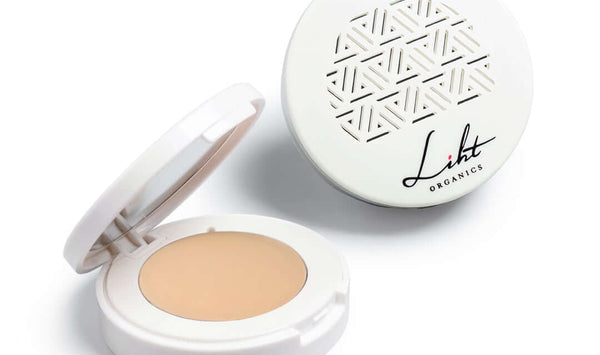
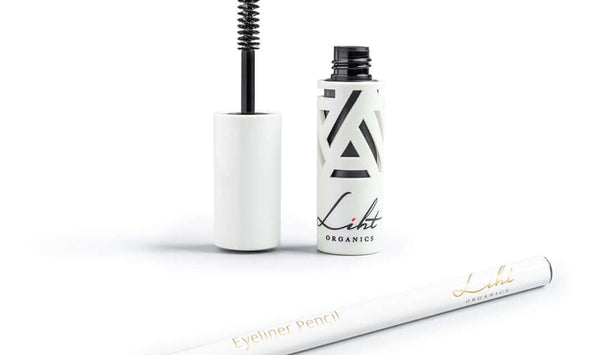
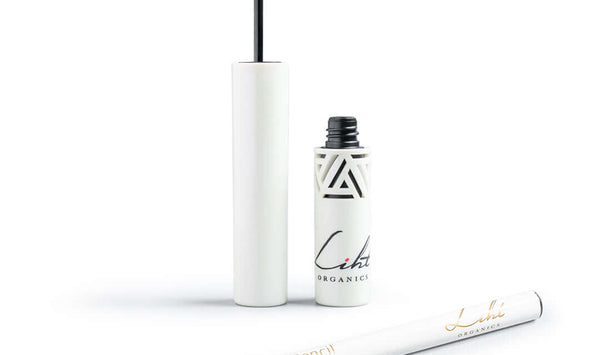
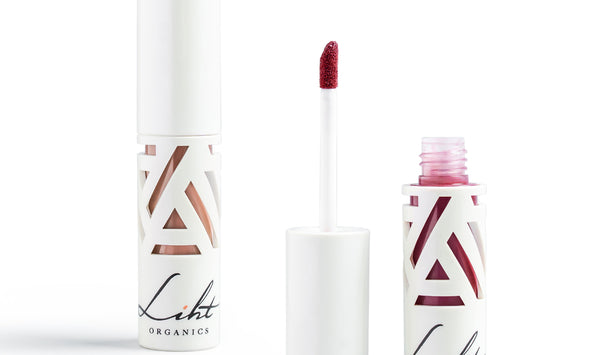
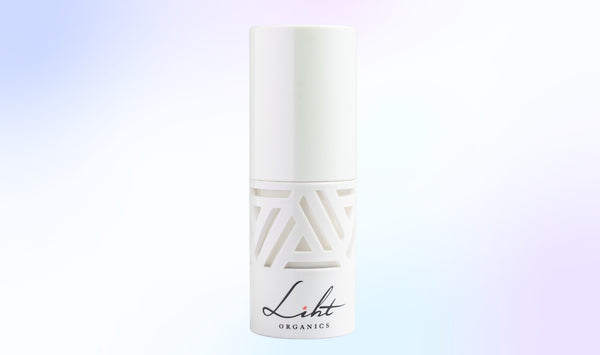

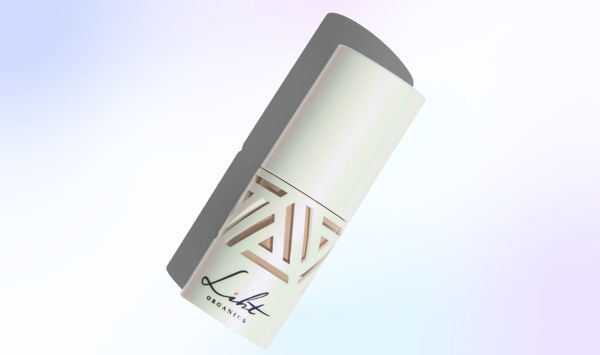
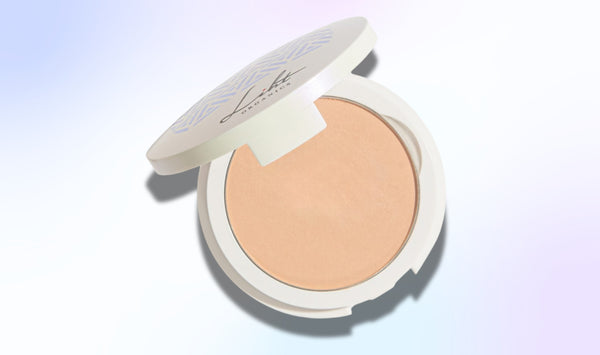
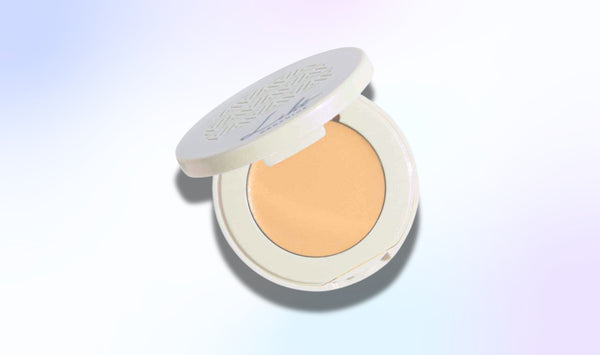
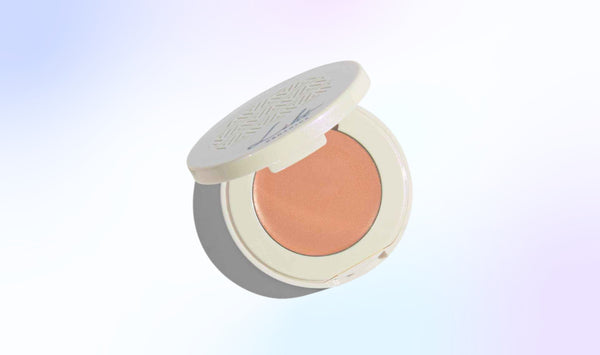
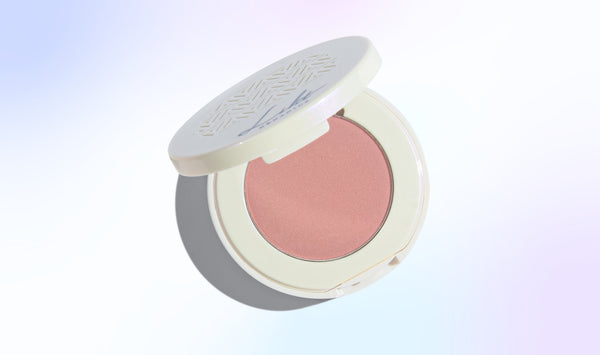
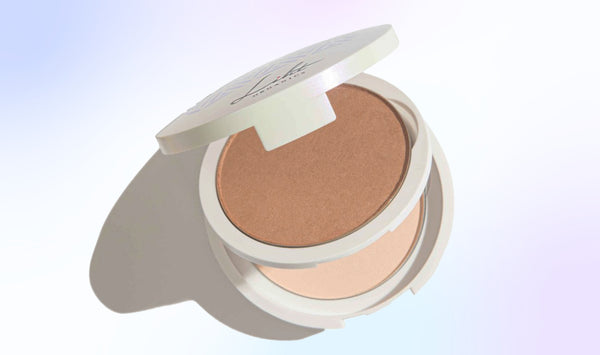
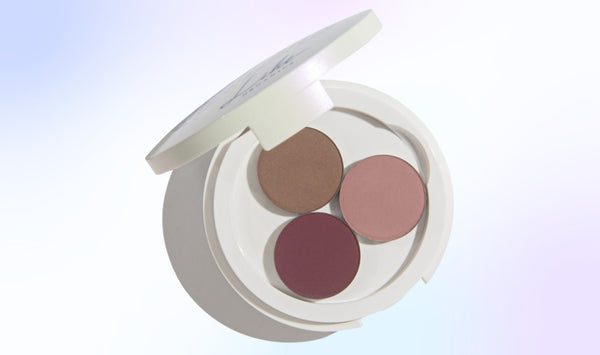
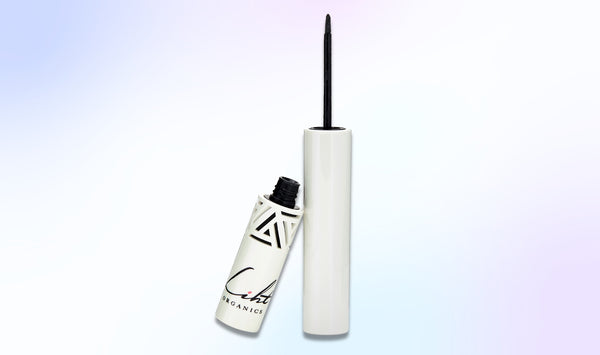
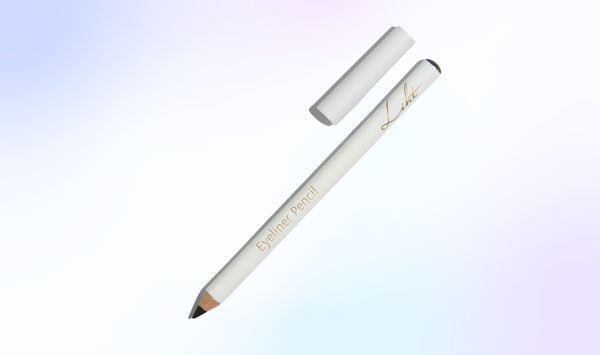
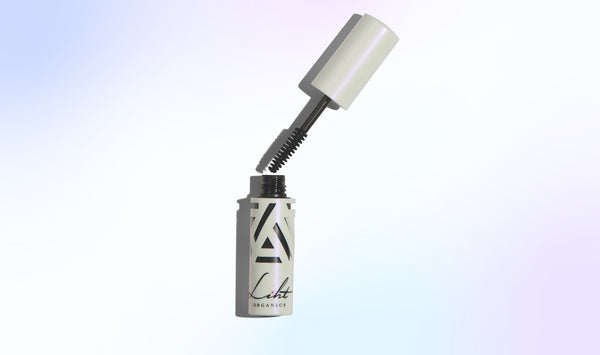
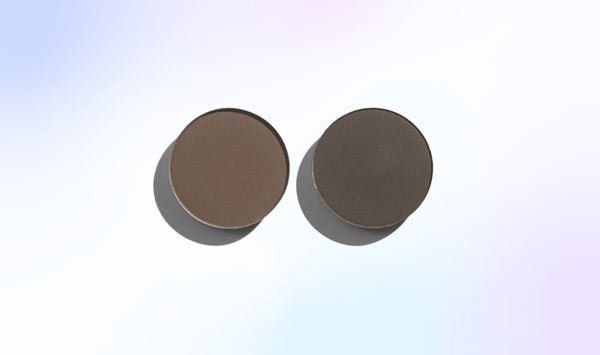
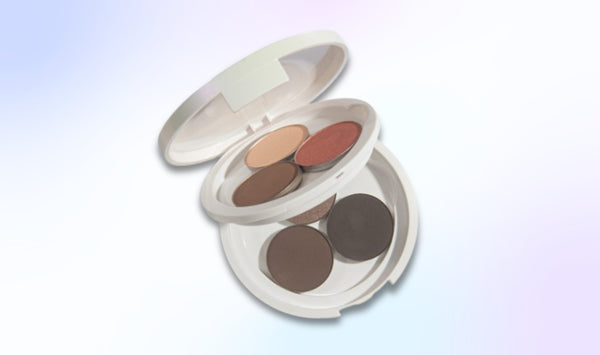
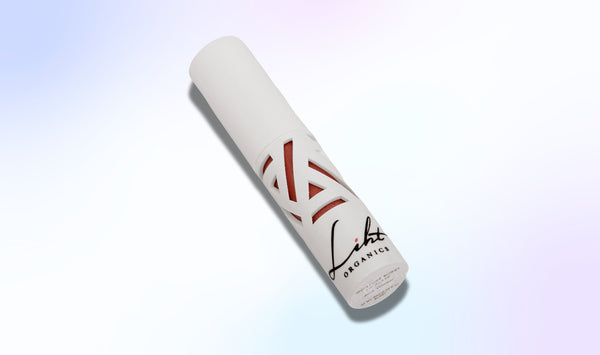
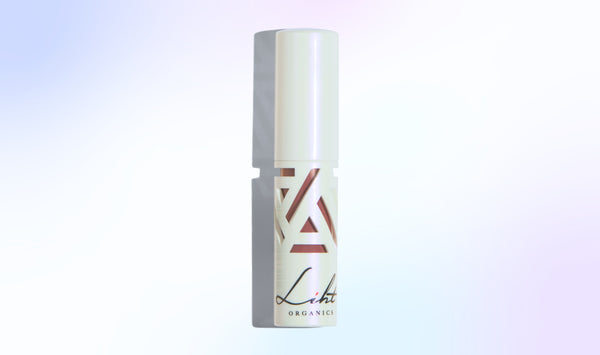
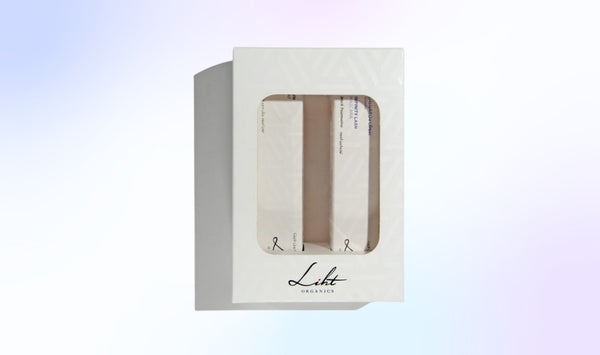
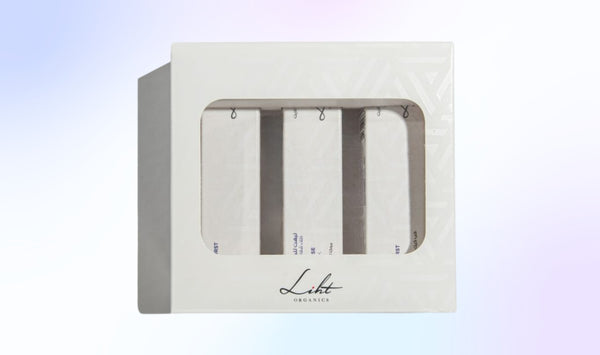


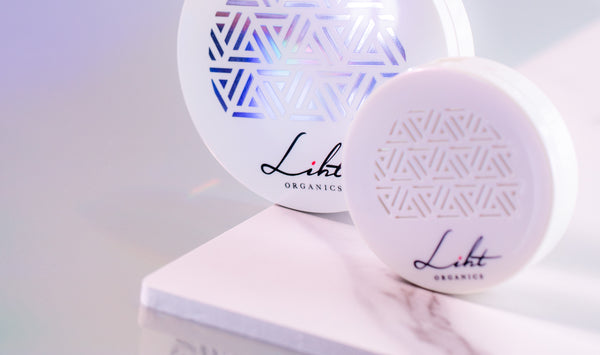
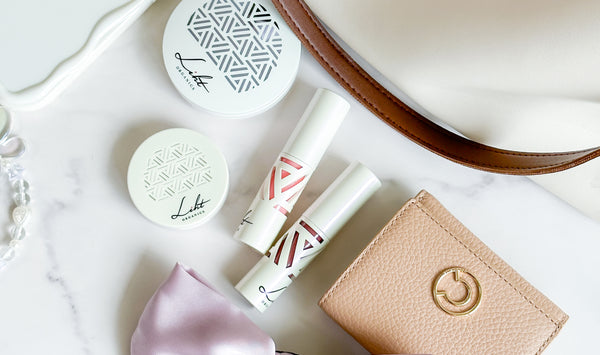
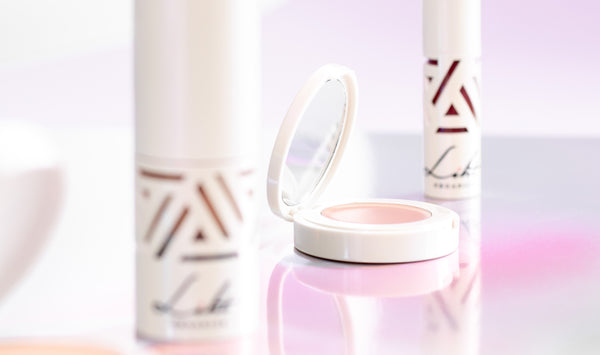




![[FEATURE] Liht Organics to debut at TFWA Asia Pacific show](http://lihtorganics.com/cdn/shop/articles/1_1.png?v=1759328400&width=170)
![[FEATURE] The Singapore-based organic makeup brand is a first-time exhibitor at this year’s TFWA Asia Pacific Exhibition in Singapore in May 2025](http://lihtorganics.com/cdn/shop/articles/2_1.png?v=1759328386&width=170)
![[FEATURE] Travel Retail Awards 2025 finalists - Best Make-up Product Color-Intense Liquid Lipstick – Liht Organics](http://lihtorganics.com/cdn/shop/articles/4_e2f54f0f-fcd1-46e7-9990-fc9d29e35131.png?v=1759328382&width=170)
![[FEATURE] Liht Organics targets expansion in travel retail](http://lihtorganics.com/cdn/shop/articles/3_1.png?v=1759328346&width=170)
































































